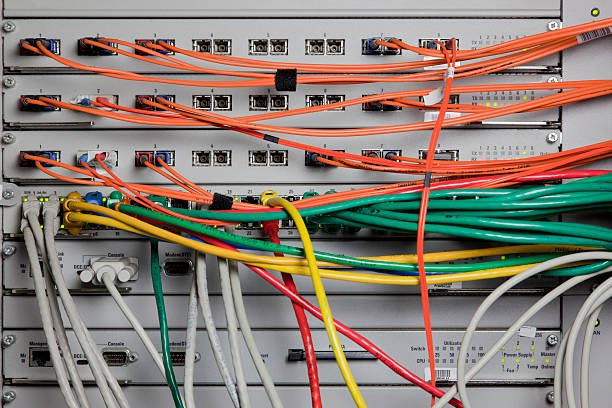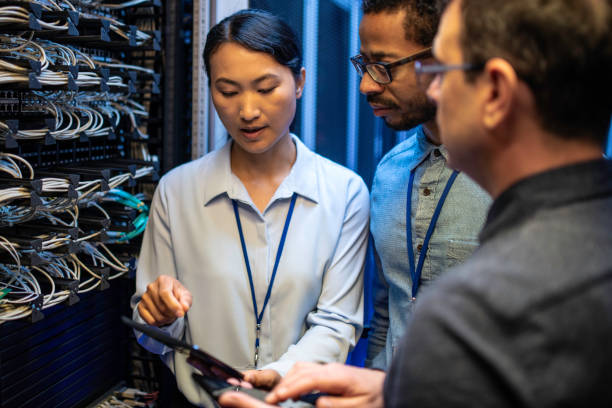As the digital age progresses, the demand for high-speed internet and data reliability has surged. Businesses and individual consumers alike face the choice between fibre optic cable installation and traditional copper cabling. Understanding the nuances of both options can help you make an educated decision that best suits your needs. This article provides a comprehensive comparison of fibre cable installation and traditional cabling, exploring their differences, strengths, weaknesses, and applicability in various contexts.

The Significance of Cabling in Today’s Digital World
The cabling infrastructure of any region stands as the backbone of communication, delivering not only internet connectivity but also various data-driven services. In Canada, as in many parts of the world, there is a growing debate over the choice between fiber optic cabling and traditional cabling methods. The significance of this choice is magnified by the emerging technologies that rely on fast and stable internet connections.
Fiber optic technology, often associated with higher speeds and more reliability, is increasingly seen as a strategic investment. On the other hand, traditional cabling, such as coaxial and twisted-pair cables, remains in place in many areas. Both options have implications for businesses, consumers, and the tech industry at large.
Understanding Fiber Optic Cable Installation
Fiber optic cables use light to transmit data, making them faster and less susceptible to interference compared to traditional cables. The installation of fiber cables typically involves laying these wires either underground or through existing conduits. One of the key aspects of fiber cable installation is its capacity to handle higher bandwidth, making it the preferred choice for businesses requiring ultra-high-speed internet (such as data centers and ISPs).
| Feature | Fiber Optic Cables | Traditional Cabling |
|---|---|---|
| Transmission Speed | Up to 100 Gbps or more | Up to 10 Gbps in optimal conditions |
| Signal Interference | Minimal to none | Moderate, susceptible to electromagnetic interference |
| Distance | Up to 60 miles without signal booster | Typically less than 1 mile |
| Cost | Higher initial installation cost | Lower initial cost |
Traditional Cabling – An Overview
Traditional cabling primarily comprises twisted-pair copper cables or coaxial cables. These cables have been used for decades and are still prevalent in many regions due to their lower initial costs and easier installation processes. However, traditional cables do come with certain limitations, particularly in terms of bandwidth and susceptibility to interference, which can affect performance quality.
Traditional cables are typically more cost-effective for smaller installations. In residential settings or small businesses that don’t require substantial bandwidth, traditional cabling can offer a satisfactory solution.
Performance and Reliability
Performance and reliability are critical factors when considering cabling options. Fiber optic cables deliver superior performance owing to their high bandwidth capabilities and minimal signal loss. This is crucial for industries and applications that depend on high data transfer rates, such as streaming services and cloud computing.
Traditional cables, by contrast, may suffer from performance degradation over long distances or under conditions of high electromagnetic interference. As such, environments with substantial wireless equipment might favor fiber to ensure data integrity.
Cost Analysis
Cost is often a substantial consideration when choosing between fiber and traditional cabling. While fiber optics often involve a higher upfront cost due to the need for specialized equipment and labor-intensive installation processes, their long-term efficiency rates can offer better value over time.
Conversely, traditional cabling is typically less expensive to install, making it an attractive option for specific budget constraints. However, it may require more frequent maintenance and upgrades due to its limited lifespan.
Installation Processes
The process of installing fiber optics is more complex. It includes designing routes, securing appropriate permits, and training technicians in specialized installation processes. This complexity can prolong installation timelines but is offset by the increased performance and durability of fiber optic networks.
Traditional cabling installations are usually faster and less disruptive, offering a swift setup process for smaller-scale projects. This makes them a desirable choice for quick, less permanent installations.
Environmental Impact
Environmental considerations are becoming increasingly paramount. Fiber optic cables are considered more sustainable, as they consume less power, are non-metallic, and can be made from recyclable materials. This positions them favorably in an era where reducing the ecological footprint is crucial.
Traditional cables, often manufactured from copper and other metals, can have a more significant environmental impact due to mining and manufacturing processes. However, innovations in manufacturing may help mitigate some of these issues.
Repair and Maintenance
Fiber optic cables, although reliable, require professional repair work in the event of physical damage, such as from construction activities. However, routine maintenance costs are minimal due to their durability.
Traditional cabling systems, while easier to repair, may require more frequent maintenance checks, especially in areas with high electromagnetic interference. This reliability factor contributes significantly to the overall cost-benefit analysis of choosing the right cabling system.
Scalability and Upgradability
Fiber optic networks offer significant scalability, supporting the integration of future technologies without the need for substantial physical upgrades. This aspect can be particularly beneficial for rapidly growing areas or businesses.
Traditional cabling might require more comprehensive upgrades as bandwidth demands increase. Its limited scalability can hinder the growth potential and adaptability of a network over time.
Security Considerations
Security is a premium feature of fiber optic cables, as their data transmission is not easily tapped into without breaking the physical cable. This makes them an ideal choice for industries where data security is paramount.
Traditional cables are more susceptible to eavesdropping and security breaches, making them potentially less secure in environments where sensitive information is transferred.
Industry Applications
Various industries present differing requirements for cabling solutions. Fiber optics are particularly suited for data-intensive sectors such as technology firms, financial services, international communication companies, and healthcare facilities.
Traditional cabling remains widely used in industries with lower data demands, such as certain retail or small office settings, where cost over performance is prioritized.
The Future of Cabling Technologies
The decision between fiber optic and traditional cabling transcends mere cost analysis or speed considerations. With technological advancements and increasing data demands, fiber optic installation is becoming the overwhelming choice for businesses requiring high bandwidth and reliability. In contrast, traditional cabling still maintains its ground in specific contexts where cost and ease of installation are more significant deciding factors.
Globally, the transition towards fiber optics is evident, yet it must be considered within the specific needs and capabilities of individual users. Cabling remains a nuanced topic with diverse applications and implications.
FAQs
1. Why is fiber optic cable considered faster compared to traditional cabling?
Fiber optic cables use light pulses to transmit data, which results in higher transmission speeds compared to the electrical signals used in traditional copper cables. Since light travels faster than electricity and can carry more data per second, fiber optics offer significantly higher bandwidth capacities—up to 100 Gbps or more. This capacity supports faster internet speeds and more reliable connections, particularly important for data-heavy operations such as video conferencing, online gaming, and large-scale cloud computing services.
2. Is fiber optic installation more expensive than installing traditional cables?
Yes, the initial cost of fiber optic installation is typically higher than traditional copper cables. The expense is due to the cost of materials, the complexity of the installation, and the specialized skills required for handling and splicing fiber cables. However, fiber optics have lower maintenance costs and a longer lifespan, which could lower overall costs in the long term. For businesses that require high-performance networks, the benefits of reduced latency, improved data speeds, and greater scalability may outweigh the upfront expenses.
3. Can traditional cabling still meet modern internet needs?
While traditional cabling like twisted-pair and coaxial cables can meet moderate internet needs, their performance is limited in high-demand scenarios. These cables may struggle with bandwidth-intensive applications due to interference and signal degradation over long distances. As consumer expectations and business operations increasingly depend on high-speed internet, traditional cabling may need to be augmented with additional technology or replaced by fiber optics to meet evolving demands efficiently.
4. What are the environmental benefits of choosing fiber optic cabling?
Fiber optic cables provide several environmental benefits. They do not rely on metallic components like copper, reducing the need for mining raw materials. Their production process and efficient data transmission require less energy than traditional cables, contributing to decreased carbon footprints. Fiber optic cables’ longer lifespan also means fewer resources are needed for manufacturing replacements over time. These factors make fiber optics an environmentally friendly choice, especially as sustainability becomes a key consideration in infrastructure development.
5. How do security features compare between fiber optic and traditional cabling?
Security is a critical differentiator between fiber optic and traditional cabling. Fiber optics are inherently more secure, as it is challenging for unauthorized parties to tamper with the cables without breaking them, which disrupts data transmission. As a result, they are less susceptible to data breaches and eavesdropping. Conversely, traditional copper cables can be tapped more easily, making them less secure, especially in scenarios involving highly sensitive data exchanges. This quality makes fiber optic an appealing option for financial institutions, government entities, and other sectors with substantial security demands.

